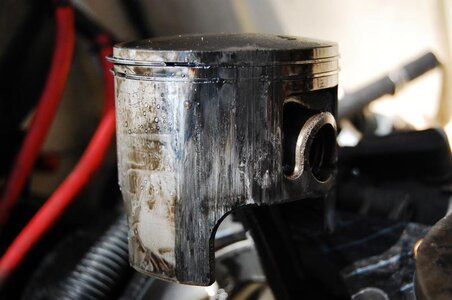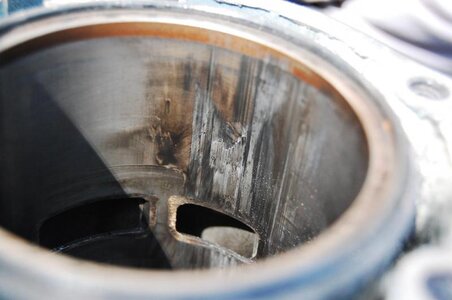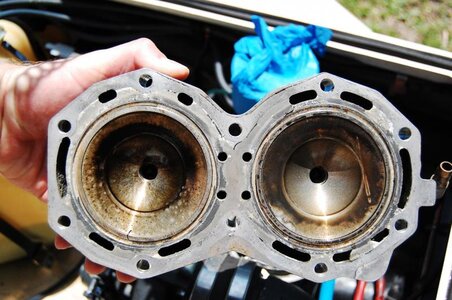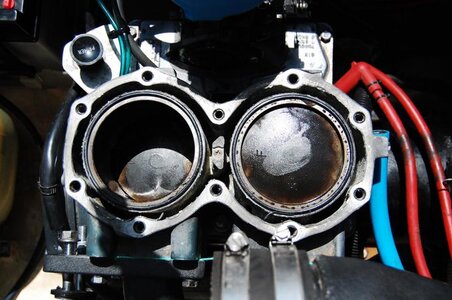Hey guys, just got back from my second ride on my new-to-me 61x in my superjet. Haven't even gotten through my first tank of gas yet. I was WOT when the ski suddenly died - started up again but it turned over really slowly and would run well enough to limp back to the dock.
So I take it home and compression test it - 150 in the front, 25 in the rear :shooter3: It tested at 150 each when I got it.
Pulled the head, everything looked pretty good. Pulled the cylinders and found this! So what is this actually? Stuck ring? I checked the plugs after the first ride and everything looked good. The thing ran great too! It's a 61x with protec head, protec black pipe, and prok flame arrestor. Otherwise stock as far as I know.
Gonna do some searching for information on rebuilding the top end and getting the cylinders taken care of but I'm all ears if anyone wants to jump in on a good place to send them and where to get parts. Looks like I'll need pistons and a bore/hone. Anything else I should be checking into with carnage like this?
So I take it home and compression test it - 150 in the front, 25 in the rear :shooter3: It tested at 150 each when I got it.
Pulled the head, everything looked pretty good. Pulled the cylinders and found this! So what is this actually? Stuck ring? I checked the plugs after the first ride and everything looked good. The thing ran great too! It's a 61x with protec head, protec black pipe, and prok flame arrestor. Otherwise stock as far as I know.
Gonna do some searching for information on rebuilding the top end and getting the cylinders taken care of but I'm all ears if anyone wants to jump in on a good place to send them and where to get parts. Looks like I'll need pistons and a bore/hone. Anything else I should be checking into with carnage like this?





